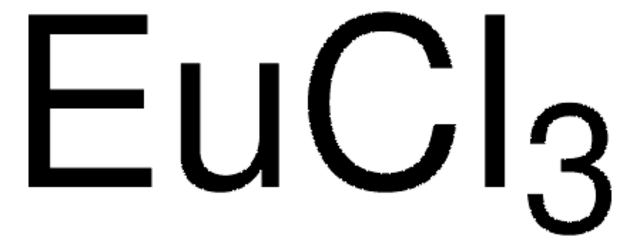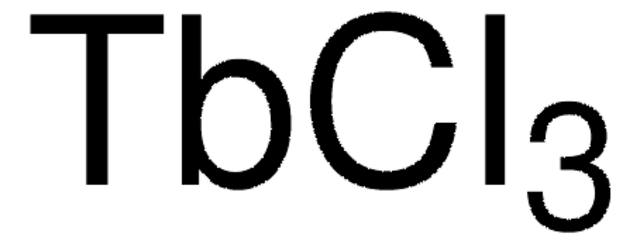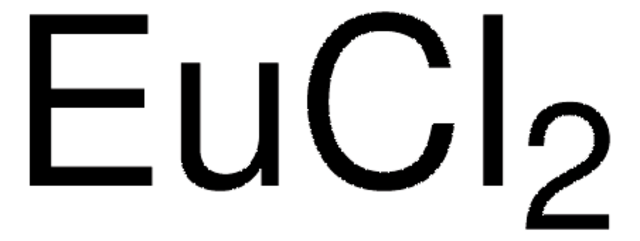212881
Europium(III) chloride hexahydrate
99.9% trace metals basis
Synonym(s):
Europium chloride hexahydrate, Europium trichloride hexahydrate, Europium(3+) chloride hexahydrate
About This Item
Recommended Products
Quality Level
Assay
99.9% trace metals basis
form
crystals and lumps
reaction suitability
reagent type: catalyst
core: europium
impurities
≤2000.0 ppm Trace Rare Earth Analysis
density
4.89 g/mL at 25 °C (lit.)
SMILES string
O.O.O.O.O.O.Cl[Eu](Cl)Cl
InChI
1S/3ClH.Eu.6H2O/h3*1H;;6*1H2/q;;;+3;;;;;;/p-3
InChI key
AWDWVTKHJOZOBQ-UHFFFAOYSA-K
Looking for similar products? Visit Product Comparison Guide
Related Categories
Application
Storage Class Code
11 - Combustible Solids
WGK
WGK 3
Flash Point(F)
Not applicable
Flash Point(C)
Not applicable
Personal Protective Equipment
Choose from one of the most recent versions:
Certificates of Analysis (COA)
Don't see the Right Version?
If you require a particular version, you can look up a specific certificate by the Lot or Batch number.
Already Own This Product?
Find documentation for the products that you have recently purchased in the Document Library.
Articles
Rare earth elements are vital in everyday life worldwide: catalysts in cars, colors in screens, magnets in electronics. Essential for modern living.
Our team of scientists has experience in all areas of research including Life Science, Material Science, Chemical Synthesis, Chromatography, Analytical and many others.
Contact Technical Service







